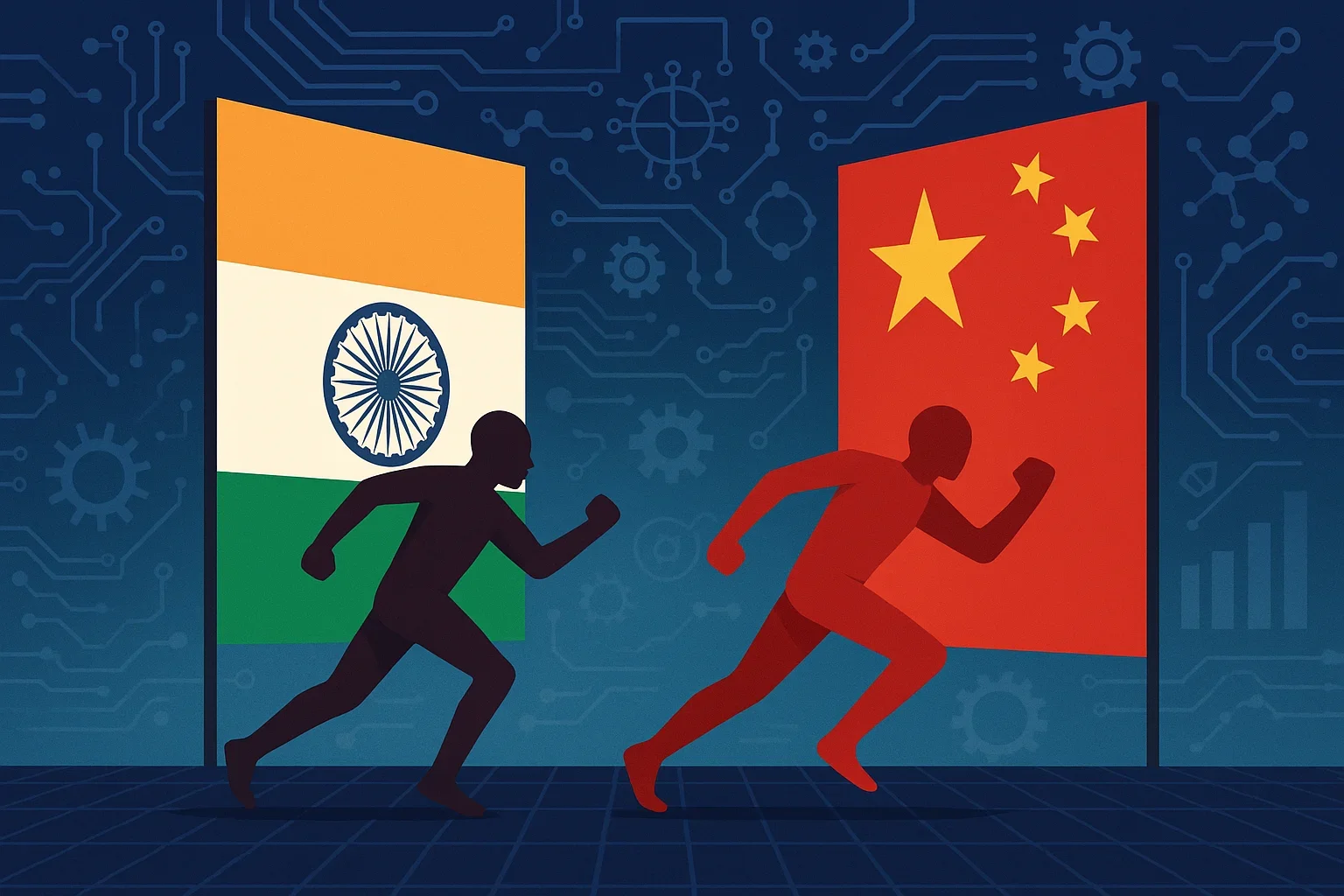India vs. China: Asia’s New Digital Battlefield
In the 21st century, the tech race between India and China is no longer just about economics — it’s a clash of ideologies, governance models, and global ambitions.
Artificial Intelligence: Scale vs. Ethics
China has invested heavily in AI for years. With state backing and tech giants like Baidu, Tencent, and Huawei, the country has advanced in facial recognition, predictive security, and automation. Beijing views AI as a tool for social control and global influence.
India promotes a more transparent and inclusive approach. Its “AI for All” initiative targets applications in healthcare, agriculture, and education — with an emphasis on fairness and access. Collaboration with Google, Microsoft, and others bolsters this people-first strategy.
Mobile Infrastructure: Chinese 5G vs. Indian Openness
China leads in 5G through Huawei and ZTE. Despite global resistance and US sanctions, its network already covers over 90% of its population.
India excluded Chinese vendors from its 5G rollout due to security concerns. Instead, it turned to domestic providers and Western partners like Nokia and Ericsson — creating a more secure but slower-expanding ecosystem.
Digital Sovereignty: Control vs. Decentralization
Beijing’s model relies on strong state control. Its “Great Firewall” blocks foreign platforms and ensures full state access to data — a form of digital self-reliance with clear privacy trade-offs.
India also seeks digital sovereignty, banning many Chinese apps, but prefers a democratic route. Its data protection laws are inspired by the EU’s GDPR, and the IndiaStack platform enables digital identity with rights-respecting safeguards.
Geopolitical Dimensions
This tech rivalry is embedded in geopolitics. China exports its model through the Belt and Road Initiative, funding digital infrastructure in Africa and Asia. India, meanwhile, aligns with the West — especially through the Quad (US, Japan, Australia, India) to promote an open Indo-Pacific.
Outlook: Two Systems, One Continent
In the short term, China may maintain its edge through scale and centralization. But India’s open, inclusive model could prove more resilient and globally accepted in the long run.
Asia won’t be defined by one standard. Instead, it will host a complex coexistence — or competition — between two digital futures: one rooted in control, the other in innovation and openness.
You may also like
Disclaimer:
This article is an analytical review by the BurgasMedia editorial board and reflects the opinion of an expert group based on current political, economic, and social developments.
The conclusions presented are not predictions or factual statements, but a hypothetical interpretation of possible scenarios.
The publication is not responsible for any discrepancies with future developments and encourages readers to form independent judgments based on verified sources.








Коментари (0)
Все още няма коментари.